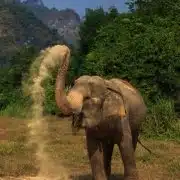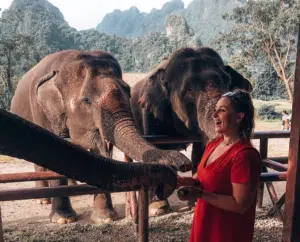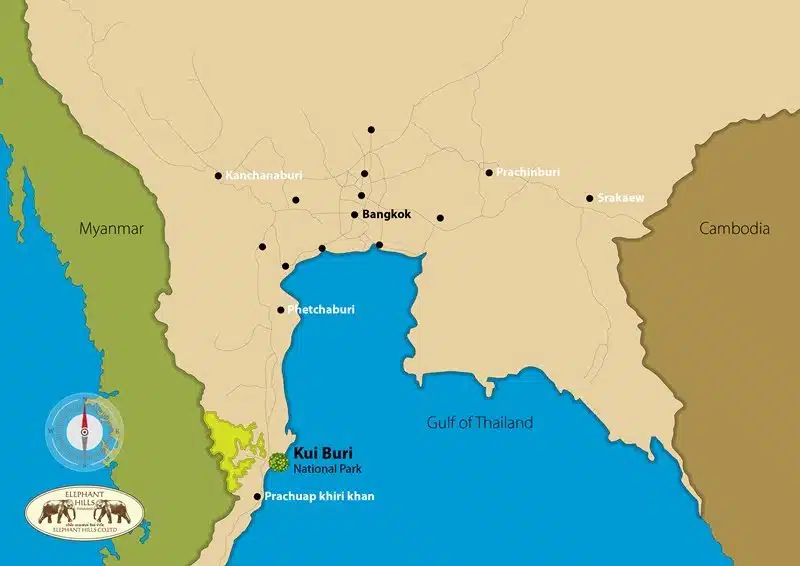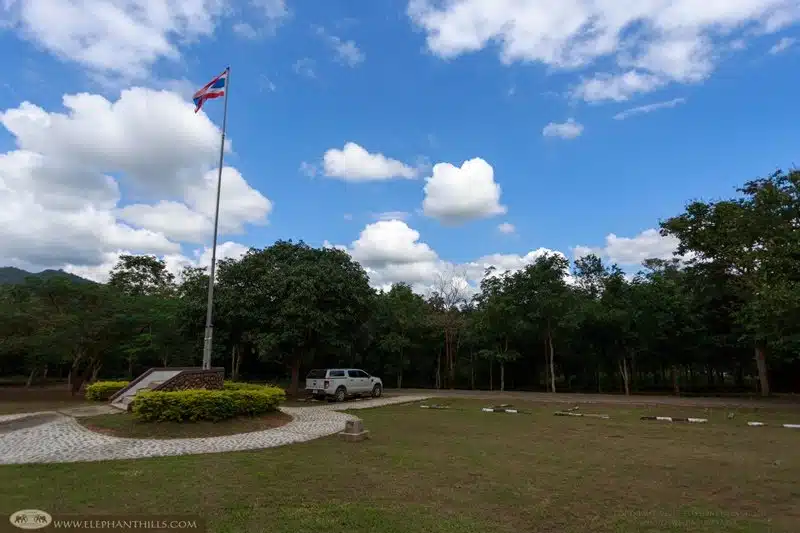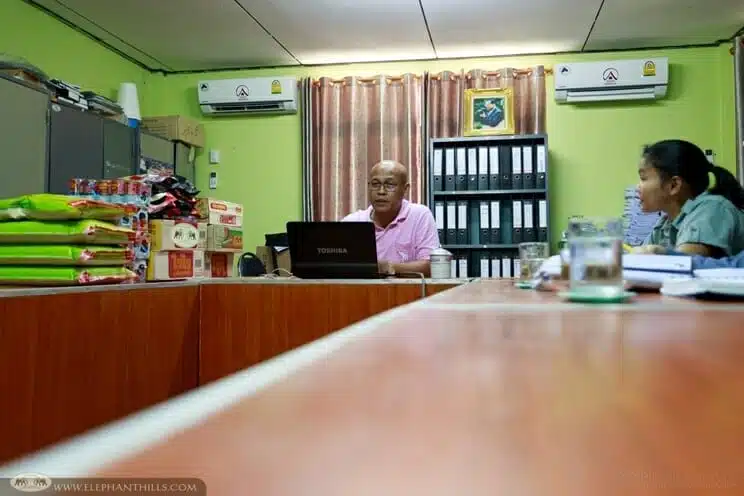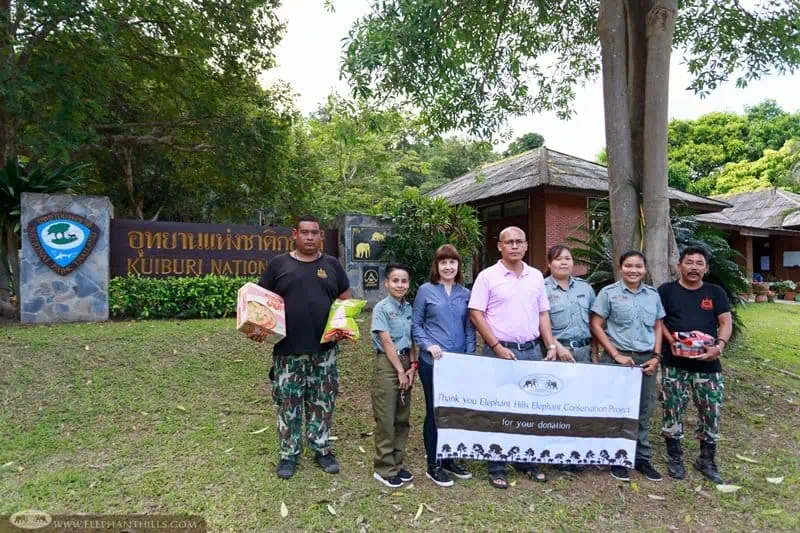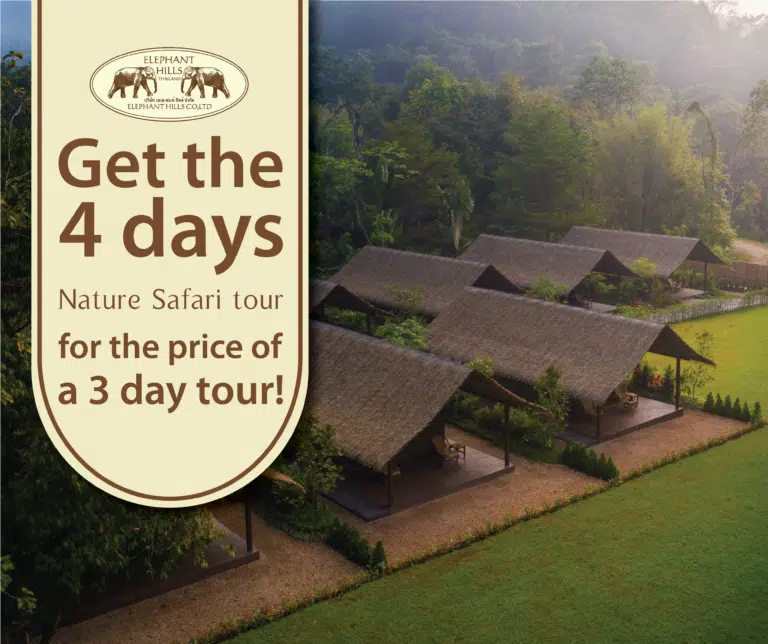Tourism, a key to reducing human-elephant conflicts?

Our Elephant Conservation Project team drove through the country to visit National Parks and Wildlife Sanctuaries most affected by human-elephant conflicts. One of the fascinating locations visited was Kui Buri National Park, located in Prachuap Khiri Khan Province in Western Thailand.
Kui Buri National park was established in 1999. Its evergreen forests spreading over 991 km2 are a home to over 230 elephants, 215 gaurs and plenty of other wildlife. Kui Buri National Park seems to be a model example on tackling the human-elephant conflict and creating a mutual understanding with local people. The first encounters between the local people and wild elephants began in the late 90’s, and quickly escalated into problems. At first, local people didn’t know how to efficiently and safely fend off the wild elephants from their plantations, and ended up shooting, even killing elephants.
Over the years the National Park has been able to negotiate with and educate the local people. Better farming methods were developed, and new ways of fending off the elephants were introduced. Modern technology has also stepped in and today there is an active group of locals and National Park officers regularly reporting wild elephant sightings on an online messaging application. This way the park officers can quickly react and help the locals to keep the elephants at bay.
Kui Buri National Park didn’t leave it to that, and they actually managed to create an alternative income for the locals in the form of tourism. Many of the local people have been trained to be tour guides, taking foreign visitors to see the wild elephants from a distance, in selected observation spots. In the afternoon, between 2pm to 6pm the elephants emerge from the forest to a grass plain nearly every day, making Kui Buri one of the only places in Thailand to view wild elephants.
Although a lot of effort has been put into solving the issue, the work is far from over. Several different methods are used to try to keep the elephants in the forest in the areas nearby the vegetable and fruit plantations. For instant, bee hives placed in a row, forming a barrier between the plantation and forest has been a rather effective choice. The National Park is also working hard to provide salt and minerals in the form of salt licks, drinking water ponds and food by planting more trees for the growing wild elephant population.
With funds donated by our elephant-loving visitors, we were able to help the rangers tirelessly patrolling and sorting out the conflicts by donating dried food and rice. More help is needed, and we are currently looking for individuals and companies to co-operate with our Elephant Conservation Project. Would you or your company like to help to conserve the wild elephant populations in Thailand? Please contact us at [email protected] for more information!
Stay up to date about the latest developments at Elephant Hills! Sign up for our newsletter now.

